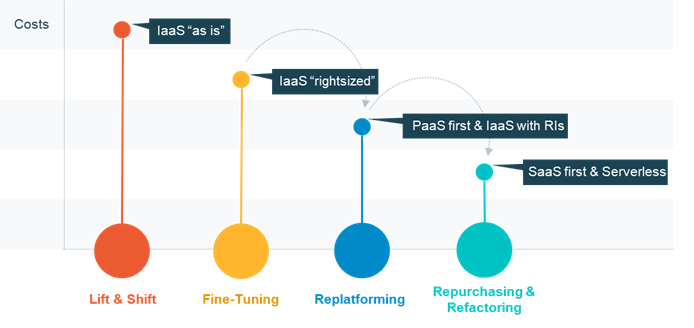Studies of new technologies and solutions
Key role(s)
Objectives
Benefits
Although often the right approach is to start with an idea and then find the right technology, innovation sometimes involves the fact that a new technology can give ideas for new uses, new possibilities… This is the image of the Cloud, whose countless possibilities have created new "value propositions" for products.
This can be achieved through:
- new IaaS components
- new PaaS services
- new SaaS solutions
- new regions
- new call options
- serverless architectures
- containerisation solutions
- the use of spot instances
- ....
But it is not enough to have read a blog to identify tomorrow's optimizations: you have to prove the concept and produce synthesis documents (See Identification of refactoring opportunities).
Containers & microservices
The use of containers must be considered in the optimization of costs. Taking AWS as an example, there are no additional costs for AWS Elastic Container Service (ECS): One simply pays for the underlying EC2 instances and the associated EBS volumes. This makes it possible, for example, to use Docker Containers to consolidate several small underutilized instances. But we can gain even more by moving towards serverless microservices, for example by using Lambda functions that will only be called by API when needed and paid for at runtime.
Database Replatforming
Switching to open source, such as PostgreSQL, MySQL or MariaDB, or migrating to Aurora from AWS, you can make significant license savings!
Of course, we won't consider the massive migration of all the company's databases, but we can consider pragmatic refactoring by separating some functions.
Use of ad hoc fleets
The spot instance fleets (spot instances) make it possible to put a large fleet of "workers" at a lower cost (better market price) to carry out minor tasks that can be stopped at any time. This can be used, for example, to carry out in the background resizing of images for a website.
From pure IaaS to SaaS / Serverless
